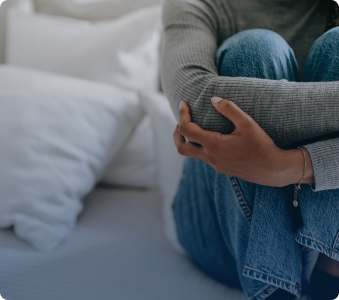The intersection of identities is both a source of pride and challenges experienced by many Americans today, and for 61 million people, that includes living with a disability. For those living with a condition that is apparent and/or necessitates some form of an accommodation to be safe and comfortable navigating in society, their disability may be their primary identity as it is the one that is most often marginalized and often requires the most effort to manage with others.
The term “disability” is defined by the federal government in various ways, depending on the context. For the purposes of federal disability nondiscrimination laws (such as the Americans with Disabilities Act), the definition of a person with a disability is typically defined as someone who “has a physical or mental impairment that substantially limits one or more major life activities, has a record of such an impairment, or is regarded as having such an impairment.” Some of the broad categories of disabilities include:
- Physical or mobility-related disabilities
- Cognitive, developmental or intellectual disabilities
- Sensory disabilities (blindness or deafness)
Despite the historic passage of the Americans with Disabilities Act (ADA) in 1990, people with disabilities often continue to face discrimination and unequal access in employment, housing, medical care and insurance coverage.
Compounding the issue of discrimination, many people with disabilities experience physical challenges including immobility or extreme pain, and social challenges such as isolation or being excluded from invitations to social events and recreational activities that are extended to people who do not live with a disability.
Managing these types of obstacles can take a toll on a person’s mental health. Having a disability, whether it has been a part of their identity from a young age, or developed/diagnosed later in life, is a risk factor for many mental health conditions. The additional factors of loneliness, abuse from caregivers and challenges achieving a satisfactory quality of life due to lack of access to proper care can increase the risk of mental illness.
Barriers To Mental Health Care
People with disabilities often encounter challenges when seeking out effective and accessible mental health care, whether it’s in-person or virtual communication barriers making it difficult to interact with a mental health professional or the lack of reliable transportation for a person with a mobility-related disability.
This is in addition to dehumanizing stigmas where people can be treated as “less than” because of their disability. This is called ableism, which is characterized by the practices and dominant attitudes in society that devalue and limit the potential of those with disabilities. This may include practices and beliefs that assign inferior value to people who have developmental, emotional, physical or psychiatric disabilities.
It is common for people with disabilities to encounter mental health practitioners who share with their patients a belief that people with disabilities need to be “fixed,” cannot function as full members of society or that having a disability is a “defect” rather than a dimension of difference. This stigma may result in being told that mental health symptoms are to be expected given the persons’ circumstances, and in some cases, being dismissed as unlikely to benefit from therapeutic interventions.
Stigma can also result in misperceptions that those with disabilities are not proactive about seeking care to make their conditions better. However, considering the many barriers people with disabilities face, this perception fails to take into account the significant hurdles they must first overcome.
Lack of Integrated Care
For many people living with disabilities, physical care is seen as the first priority — but when a disability impacts a person’s quality of life, it can have a direct effect on all aspects of their well-being and daily experiences. Many people with disabilities experience traumatic stress due to the painful treatments received for their physical condition, as well as depression and anxiety from the isolation they experience. Physicians treat the physical issues, but often view any mental health symptoms as a by-product of the physical experience. Those mental health issues can often be overlooked or dismissed in order to focus on providing physical comfort or pain relief.
In the field of health and medicine there is often a disconnect in integration of care. Health care practices, particularly those in rural and other under-served communities, often do not have the capacity to work with providers from other specialties to coordinate care for patients. Even in comprehensive health clinics, it can be difficult to get teams to collaborate because their fields of expertise may not easily overlap, they are stretched too thin due to high ratios of providers to patients, and the lines of communication between providers may not be established to facilitate these important exchanges due to technology compatibility and insurance coverage issues.
Given this circumstance, individuals are encouraged to keep their own records and ask questions during visits. Acting as a self-advocate and/or advocating for a loved one is often the best way to ensure that physical health and mental health care providers are communicating important care information with each other.
Poverty and Unemployment
Access to care is a systemic barrier directly related to unequal access to employment and health insurance. Many people living with disability face employment discrimination and have difficulty accessing full-time employment. According to the U.S. Bureau of Labor Statistics, in 2021, 19.1% of people with disabilities were employed. Those who are working are often only able to obtain part time and/or temporary work which does not usually include access to health care benefits.
People with disabilities are nearly three times as likely to live in poverty, and earn a median income one-third less than those who do not have a disability. Disability benefits from government agencies often do not provide enough funding to live independently with a disability or to live in assisted living facilities.
Cost
Treatment for illness, including the costs of medications, can be very expensive and are not always covered by government benefits. Not having access to affordable housing has led to increases in homelessness amongst people with disabilities, which can have a direct impact on mental health. People living with disabilities often face the insurmountable expense of paying for medical needs out of pocket, which often leads to prioritizing physical care over mental health concerns.
Communication Barriers
If a person has a disability that affects how they communicate, whether it’s hearing, speaking or understanding, it can be significantly more challenging to find a mental health professional who will know how to leverage accessibility and inclusion resources and tools to provide services.
Finding The Right Team For Your Needs
When navigating both physical and mental health care, it’s important to have as much information as possible. When searching for a provider, it is important to invest the time needed to learn how the health systems work and look for providers who are willing to help you explore potential options. Ask questions of providers such as:
- What do you think might be causing my mental health symptoms?
- Could my physical conditions be impacting my mental health?
- What assessments will you conduct to better understand the problem?
- What type of specialist do you think I should see?
- Do you have any partnerships with behavioral health specialists so we can coordinate care?
- Will my mental health treatment plan impact my physical health in any way?
- Do you know if there are mental health providers I can work with who have experience treating individuals with disabilities?
- Is the location for treatment accessible for people with a mobility condition?
Are there telehealth options available? - How would I go about requesting an accommodation like a sign language interpreter?
Finding the right behavioral health provider often starts with your primary care provider. Your medical team should be in sync with each other to establish an integrated care routine. When your medical providers work together, they can manage your care holistically — seeing a complete picture that includes your unique needs and collaborating to develop therapies, medications and scheduling that work best for you.
They should also be able to provide resources such as access to transportation, care that is cost effective and programs that can help to cover medical expenses. Physicians who regularly work with people living with disabilities often have relationships with mental health providers with the knowledge, tools and ability to treat a person with a disability with the care and dignity they deserve.
If a primary care provider does not have access to the mental health providers and resources needed, there are a wide array of supports that can be accessed independently. The American Association for People with Disabilities has a wealth of resources that can help identify accessible treatment and support. There are also a wide variety of support groups and social media platforms that can help connect with others who are similarly situated.
If access to behavioral health resources through an employer either directly or through a partner or parent to an Employee Assistance Program is an option that is available, you can specifically ask for practitioners who are versed in treating people with disabilities.
Seeking out these connections and support – and simply knowing that you are not the only one struggling with both a disability and mental health concerns – can be a welcome source of strength. You can find encouragement in the stories, lessons learned and triumphs of others and empathize with those traveling a similar path.
More Information
- If finances are preventing you from finding help, contact a local health or mental health clinic or your local government to see what services you qualify for. You can find contact information online at findtreatment.samhsa.gov or by calling the National Treatment Referral Helpline at 800-662-HELP (4357).
Resources
Please note: The resources included here are not endorsed by NAMI, and NAMI is not responsible for the content of or service provided by any of these resources.
American Association of People with Disabilities (AAPD)
This is the largest national nonprofit cross-disability member organization in the U.S. dedicated to ensuring economic self-sufficiency and political empowerment for the more than 56 million Americans with disabilities. AAPD works in coalition with other disability organizations for the full implementation and enforcement of disability nondiscrimination laws, particularly the Americans with Disabilities Act (ADA) of 1990 and the Rehabilitation Act of 1973.
Centers for Disease Control and Prevention (CDC): Disability and Health Promotion
The CDC has compiled data, research and programming specifically for people living with a disability.
Employer Assistance and Resources Network (EARN) on Disability Inclusion
EARN provides resources for employment seekers and job training for those looking to gain and build skills necessary to succeed in the workforce.
Financial Assistance and Support Services for People with Disabilities
This government listing provides resources on a wide range of tools for people with disabilities to apply for financial assistance with medical treatment, as well as housing resources and tax help.
The ARC
The ARC promotes human rights for people with intellectual disabilities and provides resources and support for families.
Volunteers of America
This site contains resources for affordable housing, employment and behavioral health services.
Why We Need Therapists with Disabilities
This article discusses the importance of promoting mental health providers who have disabilities for an inclusive behavioral health experience.

